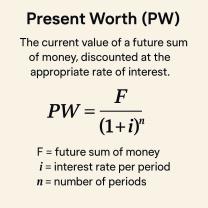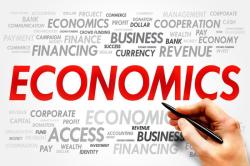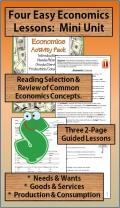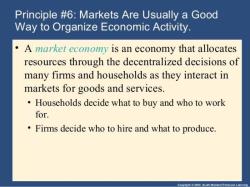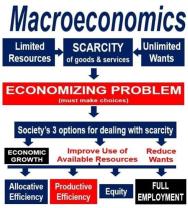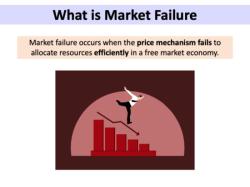When will the steel market improve?
Predicting the precise timing of improvements in the steel market can be challenging because it is influenced by a complex interplay of factors, including economic conditions, global demand, supply chain disruptions, government policies, and industry-specific dynamics. Here are some factors and predictions related to the steel market:
Factors Influencing the Steel Market:
Economic Recovery: The steel market often correlates with economic conditions. As economies recover from recessions or slowdowns, there is typically increased demand for steel in construction, manufacturing, and infrastructure projects.
Infrastructure Spending: Government infrastructure investments can boost steel demand. In the United States, for example, significant infrastructure spending has been proposed, which could drive increased steel consumption.
Global Demand: Steel is a global commodity, and demand can be influenced by economic growth in major steel-consuming countries, such as China, India, and the United States.
Supply Chain Disruptions: The steel industry can be impacted by supply chain disruptions, such as those seen during the COVID-19 pandemic. These disruptions can affect steel production and pricing.
Raw Material Prices: The cost of raw materials, particularly iron ore and scrap metal, can influence steel production costs and, consequently, steel prices.
Trade Policies: Tariffs and trade restrictions can affect the global steel market by impacting the flow of steel imports and exports.
Predictions for the Steel Market:
Gradual Recovery: Many experts anticipate a gradual recovery in the steel market as economies rebound from the effects of the COVID-19 pandemic. However, the timing of this recovery can vary by region.
Infrastructure Investments: Increased infrastructure spending, particularly in major economies like the United States and China, is expected to drive higher steel demand in the coming years. These investments could contribute to market improvements.
Volatility: Steel markets are often characterized by price volatility. Factors like supply chain disruptions, trade disputes, and geopolitical tensions can lead to short-term fluctuations.
Environmental Considerations: The steel industry is under pressure to reduce its carbon footprint. This may lead to investments in cleaner steelmaking technologies and the development of greener steel products.
Technological Advances: The adoption of advanced manufacturing and automation technologies can enhance the efficiency and competitiveness of steel producers.
Geopolitical Factors: Geopolitical developments, such as changes in trade policies or tensions between major steel-producing countries, can impact the steel market.
Sustainability Initiatives: Growing emphasis on sustainability may drive demand for eco-friendly steel products, including those made from recycled materials.
Demand for High-Value Steel: Demand for high-value steel products, such as specialty steels used in electric vehicles and renewable energy infrastructure, is expected to increase.
It's important to note that while some predictions point toward improvements in the steel market, there are also uncertainties and challenges that could affect the pace and extent of recovery. Additionally, steel markets can vary significantly by region and segment, so the outlook for a particular market may differ.
Investors, businesses, and policymakers closely monitor these factors and trends to make informed decisions in the steel industry. Consulting with industry experts and staying updated on market news and economic developments can help individuals and organizations navigate the dynamics of the steel market effectively.
Forecasting the Steel Market: When Can We Expect Improvement?
The steel market is cyclical, meaning that it experiences ups and downs over time. The current steel market is in a downturn, but there are some signs that it may be improving.
One sign of improvement is that steel prices have begun to rise in recent months. This is due to a number of factors, including increased demand from China and other emerging markets, as well as supply disruptions caused by the war in Ukraine.
Another sign of improvement is that steel production is increasing. In the first half of 2023, global steel production increased by 2.2% compared to the first half of 2022.
However, there are also some challenges facing the steel market. One challenge is the rising cost of raw materials, such as iron ore and coal. This is due to the war in Ukraine and other factors. Another challenge is the global economic slowdown. This is reducing demand for steel from some sectors, such as construction.
Overall, the steel market outlook is mixed. There are some signs of improvement, but there are also some challenges. It is difficult to say when the steel market will fully recover. However, it is likely that the steel market will improve in the coming years as the global economy recovers and demand for steel increases.
Steel Industry Outlook: Factors Influencing Market Recovery
There are a number of factors that will influence the recovery of the steel industry, including:
- Global economic growth: The global economy is expected to grow in the coming years. This will lead to increased demand for steel from a variety of sectors, such as construction, manufacturing, and infrastructure.
- Government investment: Governments around the world are investing in infrastructure projects, such as roads, bridges, and airports. This will lead to increased demand for steel.
- Trade policy: Trade wars and tariffs can have a negative impact on the steel industry. However, the recent resolution of the US-China trade war is a positive sign for the steel industry.
- Technology: New technologies are being developed that could revolutionize the steel industry. For example, new steelmaking processes could reduce the cost of steel production and make steel more environmentally friendly.
Anticipating Changes in the Steel Market and Economic Factors
Steel companies can anticipate changes in the steel market and economic factors by:
- Monitoring economic data: Steel companies should monitor economic data, such as GDP growth, unemployment rates, and inflation. This data can help steel companies to predict demand for steel and make informed decisions about production and investment.
- Tracking customer trends: Steel companies should track customer trends in order to identify new opportunities and emerging threats. For example, steel companies should track the growing demand for green steel from customers.
- Conducting market research: Steel companies should conduct market research to better understand their customers and competitors. This information can help steel companies to develop new products and services that meet the needs of their customers.
By anticipating changes in the steel market and economic factors, steel companies can position themselves for success in the coming years.


